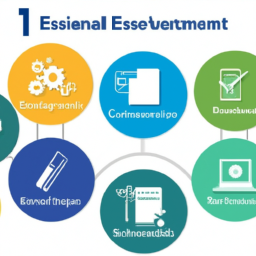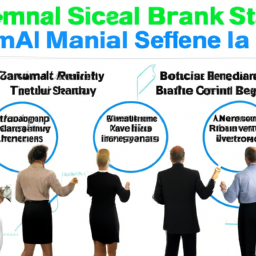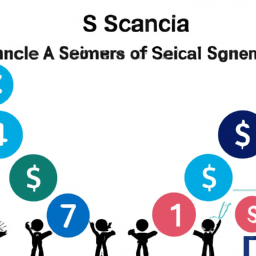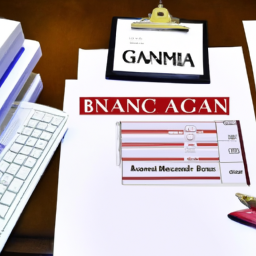Are you ready to dive into the world of Six Sigma and conquer the challenges of the bank exam?
Get set to unlock the secrets of success with ‘The Ultimate Guide to Prepare for the Six Sigma Bank Exam.’
This comprehensive article will be your compass, leading you through the intricacies of the methodology, key concepts, and essential tools.
With expert tips and strategies, you’ll be well-equipped to ace the exam and excel in the banking industry.
Let’s embark on this journey together!
Key Takeaways
- Implementing Six Sigma in the banking industry can be challenging due to complex processes and lack of top management support.
- Benefits of implementing Six Sigma in banking include enhanced customer satisfaction, reduced errors, and increased profitability.
- Understanding the challenges and benefits of Six Sigma in banking is essential for success in the bank exam.
- Grasping key concepts and principles such as the DMAIC process, Lean Six Sigma, and statistical analysis will help answer exam questions accurately and apply Six Sigma in real-life scenarios.
Understanding the Six Sigma Methodology
Understanding the Six Sigma methodology is crucial for success in the bank exam. Six Sigma is a data-driven approach that focuses on improving the quality of processes and reducing defects.
In the banking industry, implementing Six Sigma can be challenging due to various factors. One of the major challenges is the complexity of banking processes, which involve multiple stakeholders and intricate workflows. Additionally, resistance to change and lack of top management support can hinder the successful implementation of Six Sigma in banks.
Despite these challenges, there are several benefits of implementing Six Sigma in banking. It helps in enhancing customer satisfaction by reducing errors and improving the efficiency of banking operations. Furthermore, it enables banks to identify and eliminate waste, resulting in cost savings and increased profitability.
Therefore, understanding the Six Sigma methodology and its implementation challenges and benefits is essential for excelling in the bank exam.
Key Concepts and Principles of Six Sigma
Start by grasping the key concepts and principles of Six Sigma so you can excel on the bank exam. Understanding these concepts will not only help you answer exam questions accurately, but also enable you to apply the Six Sigma methodology in real-life scenarios.
Here are three important concepts to focus on:
-
DMAIC Process: This is the core framework of Six Sigma, consisting of five phases – Define, Measure, Analyze, Improve, and Control. Each phase has specific tools and techniques to identify and eliminate process defects and improve overall quality.
-
Lean Six Sigma: This approach combines the principles of Lean Manufacturing and Six Sigma to achieve maximum efficiency and customer satisfaction. It emphasizes the elimination of waste and continuous improvement through data-driven decision-making.
-
Statistical Analysis: Six Sigma heavily relies on statistical analysis to measure and quantify process performance. Understanding concepts such as variation, probability, hypothesis testing, and control charts is crucial to successfully apply Six Sigma principles.
Essential Tools and Techniques for Six Sigma Bank Exam Preparation
Mastering the essential tools and techniques for the Six Sigma bank exam will greatly enhance your preparation. To effectively prepare for the exam, it is crucial to utilize the right tools and resources.
One of the most important resources is the Six Sigma Body of Knowledge (BoK), which outlines the key concepts and methodologies required for success. Additionally, study guides and practice exams can provide valuable insights into the exam format and help identify areas for improvement.
Applying effective study techniques is also essential. This includes creating a study schedule, breaking down the material into manageable chunks, and actively engaging with the content through note-taking and practice problems.
Furthermore, using online forums and discussion groups can provide a platform for collaborative learning and sharing of knowledge.
Best Practices for Applying Six Sigma in Banking
To implement Six Sigma successfully in the banking industry, you should focus on best practices that streamline processes and improve overall efficiency. Here are three key practices that can help you achieve continuous improvement and process optimization:
-
Data-driven decision making: Utilize data analysis tools and techniques to identify areas of improvement and make informed decisions. This will help you identify bottlenecks, reduce errors, and enhance customer satisfaction.
-
Standardization of processes: Implement standardized procedures and guidelines to ensure consistency and minimize variations in operations. This will enable you to eliminate waste, reduce errors, and enhance productivity.
-
Employee involvement and training: Engage your employees in the Six Sigma journey by providing them with the necessary training and tools. Encourage their active participation in identifying improvement opportunities and implementing solutions.
By following these best practices, you can create a culture of continuous improvement and process optimization in your bank.
Now, let’s move on to the next section where we will discuss tips and strategies to ace the Six Sigma bank exam.
Tips and Strategies to Ace the Six Sigma Bank Exam
Now let’s dive into some tips and strategies that will help you excel in the Six Sigma bank exam.
When it comes to test taking strategies, it is important to approach each question systematically. Start by carefully reading each question and understanding what it is asking for. Pay attention to keywords and phrases that can guide you towards the correct answer.
Utilize your knowledge of Six Sigma principles and concepts to analyze the options and eliminate any obviously wrong answers.
Additionally, time management techniques are crucial during the exam. Allocate a specific amount of time for each question and stick to it. If you find yourself spending too much time on a difficult question, move on and come back to it later.
Frequently Asked Questions
What Are the Career Opportunities Available for Six Sigma Professionals in the Banking Industry?
In the banking industry, there are numerous career opportunities for six sigma professionals. With the right skills and certifications, you can expect significant career growth and salary potential.
Six sigma professionals are highly sought after for their expertise in process improvement and problem-solving. They can work in various roles such as quality managers, operations analysts, or project managers.
These positions offer competitive salaries and the chance to make a significant impact on the efficiency and profitability of banks.
How Can Six Sigma Principles Be Applied to Improve Customer Satisfaction in Banking?
To improve customer satisfaction in banking, it is crucial to apply six sigma principles. By implementing six sigma, you can identify and eliminate defects in your processes, leading to improved efficiency and customer experience. This results in reduced wait times, faster transaction processing, and accurate account management.
The benefits of implementing six sigma in banking include increased customer loyalty, enhanced reputation, and higher profitability. By focusing on customer needs and continuously improving your processes, you can achieve exceptional customer satisfaction levels.
Are There Any Specific Challenges or Limitations in Implementing Six Sigma in the Banking Sector?
Implementing Six Sigma in the banking sector comes with specific challenges and limitations. Some of these challenges include resistance to change, lack of top management support, and difficulty in finding qualified personnel.
These challenges can hinder the successful implementation of Six Sigma practices and impact the efficiency of the banking processes. It is important to address these challenges and find ways to overcome them in order to fully reap the benefits of Six Sigma in improving customer satisfaction and overall performance in the banking industry.
Can You Provide Examples of Successful Six Sigma Projects That Have Been Implemented in Banking Organizations?
Looking to see the impact of Six Sigma on operational efficiency in the banking sector? Wondering about successful projects in banking organizations?
Well, there’s no doubt that Six Sigma has brought innovation to the banking industry. From streamlining loan application processes to reducing customer wait times, Six Sigma has proven its worth. These successful projects have not only improved customer satisfaction but also increased profitability for banking organizations.
What Are Some Common Mistakes to Avoid While Preparing for the Six Sigma Bank Exam?
When preparing for the Six Sigma bank exam, it’s important to be aware of common mistakes to avoid. These mistakes can hinder your success and prevent you from achieving your desired results.
By understanding these pitfalls, you can take steps to avoid them and improve your chances of passing the exam.
Effective study strategies, such as creating a study schedule, practicing with sample questions, and seeking guidance from experienced professionals, can also greatly enhance your preparation process.
Conclusion
In conclusion, you have now gained a comprehensive understanding of the Six Sigma methodology and its application in the banking industry. By mastering the key concepts, principles, and essential tools and techniques, you are well-prepared to excel in the Six Sigma bank exam.
Remember the adage, ‘practice makes perfect,’ and ensure you apply the best practices for implementing Six Sigma in banking. With these tips and strategies, you are ready to ace the exam and make a significant impact in the world of banking.
Good luck!





















